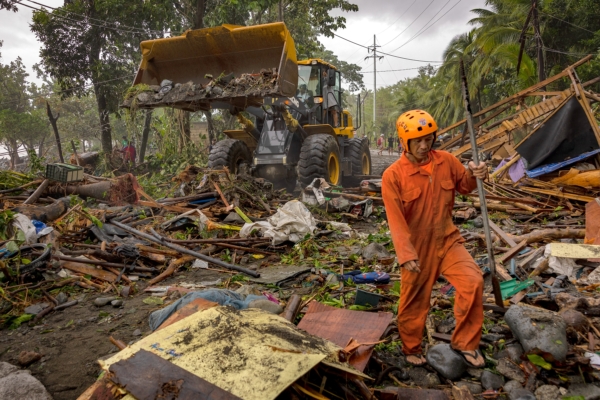On Sunday evening, November 9th, the super typhoon “Fung-wong” made landfall on the eastern coast of the Philippines, resulting in at least 2 deaths and over 1.4 million people forced to evacuate their homes. “Fung-wong” has since weakened to a strong typhoon and has moved away from the Philippines, with expectations to head towards the northeast of the South China Sea.
The Philippine meteorological agency reported on Sunday evening that at 9:10 p.m., “Fung-wong” landed in Dinalungan, Aurora province, in the northern part of Luzon Island with wind speeds of 185 kilometers per hour. The strong winds and rainfall it brought covered a width of 1,800 kilometers, affecting two-thirds of the country and leading to floods and landslides in many areas, resulting in widespread power outages in several provinces.
Prior to the landfall of “Fung-wong,” the Philippine Civil Defense reported that 2 people had already died, including a 64-year-old woman in Catbalogan City and a person who drowned in flash floods on Catanduanes Island. In addition, 2 people were injured.
Authorities have ordered the emergency evacuation of residents in multiple provinces, with over 1.4 million people being relocated to safer areas nationwide. This has led to work and school closures in various regions, including the capital Manila, and more than 400 flights were canceled.
“Fung-wong” is the 21st typhoon to hit the Philippines this year, causing severe damage and significant economic losses to the country. Prior to this, the Philippines had just suffered the devastating impact of Typhoon “Kalmaegi,” resulting in at least 224 deaths and over a hundred people missing.
President Ferdinand Marcos Jr. has declared a state of calamity nationwide for a duration of one year, instructing local governments to mobilize comprehensively to deal with the aftermath of Typhoon “Kalmaegi” and the dual impact of Typhoon “Fung-wong.”

